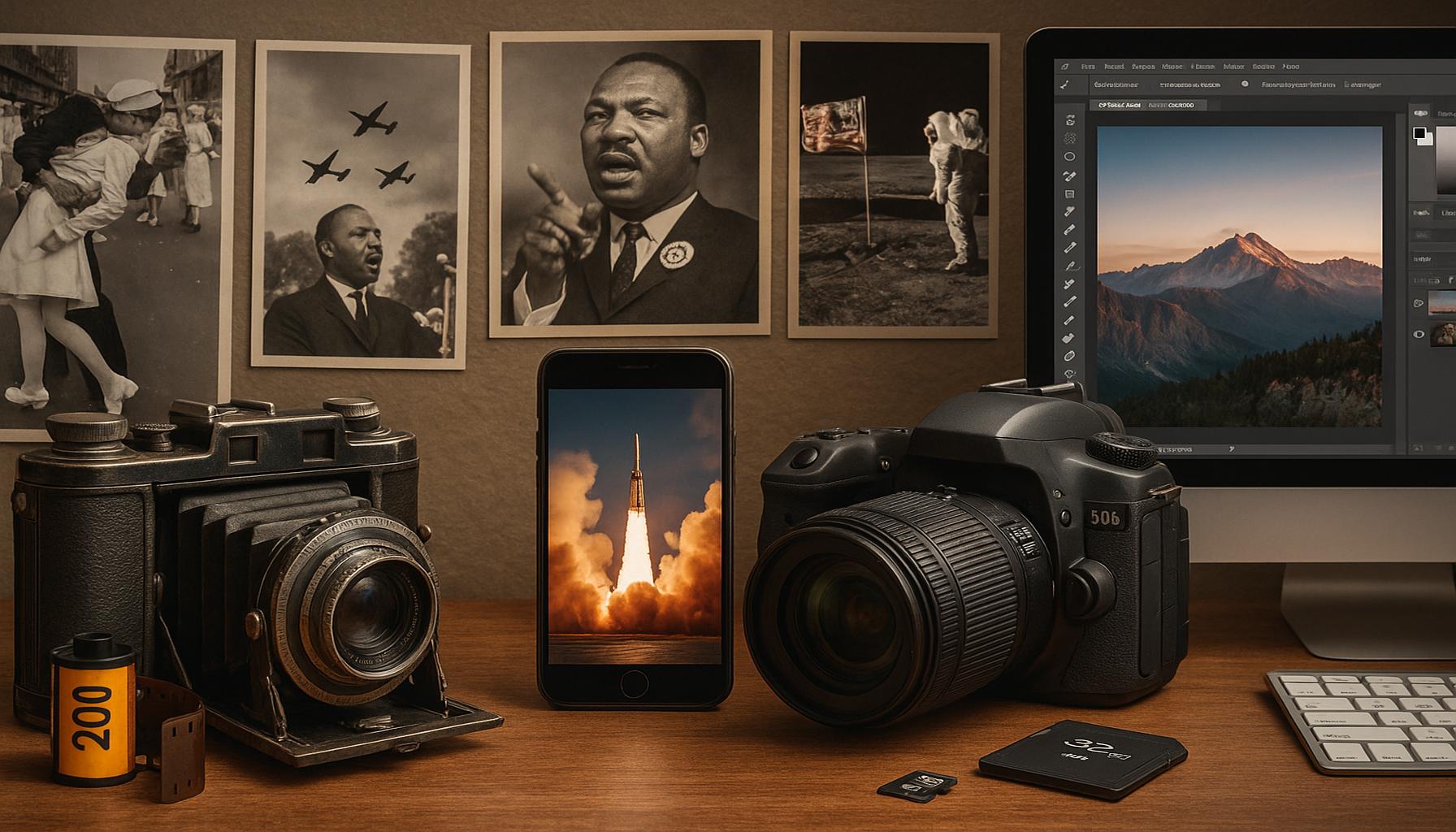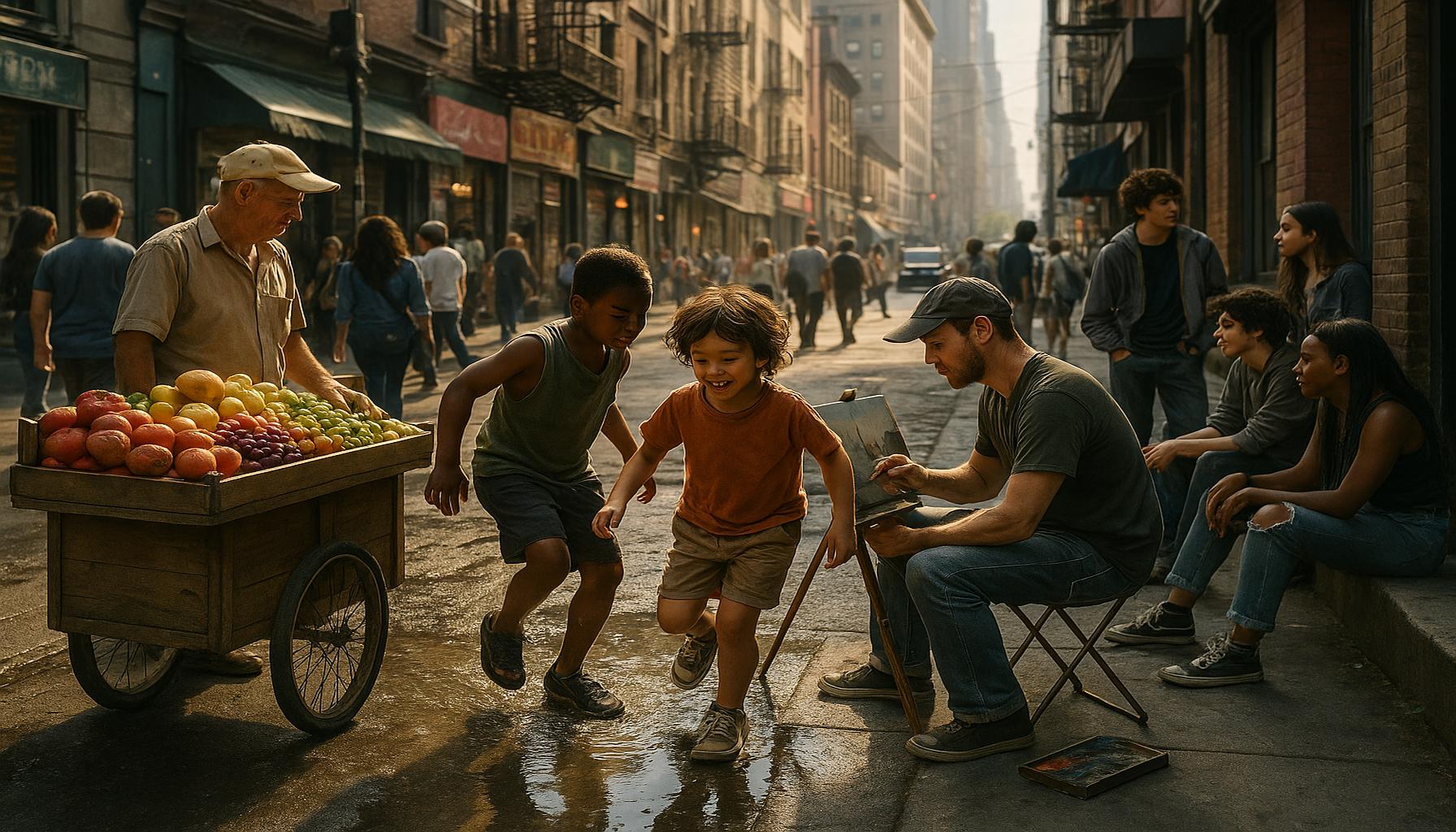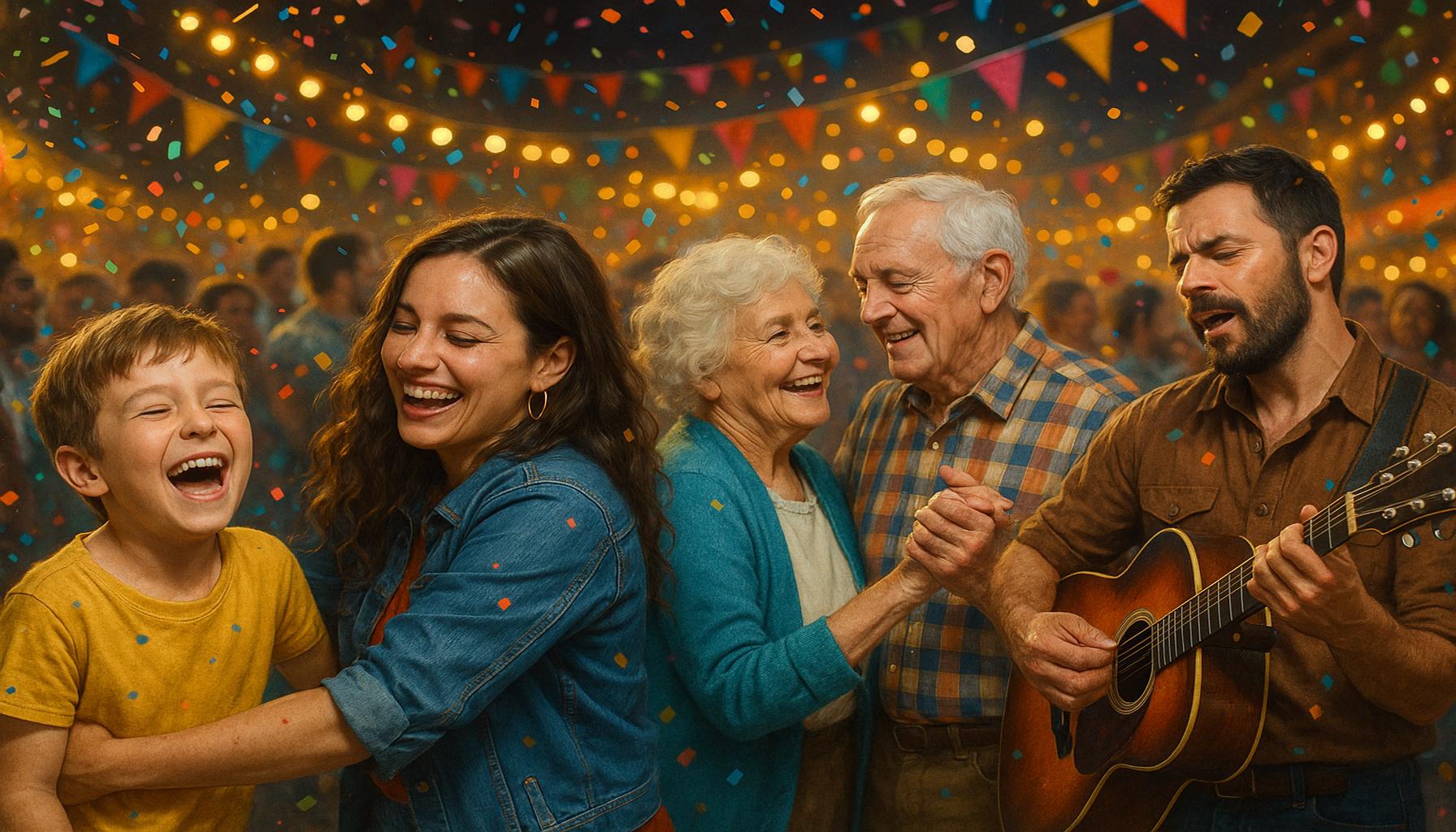The relationship between photography and music: how to capture the essence of a live performance
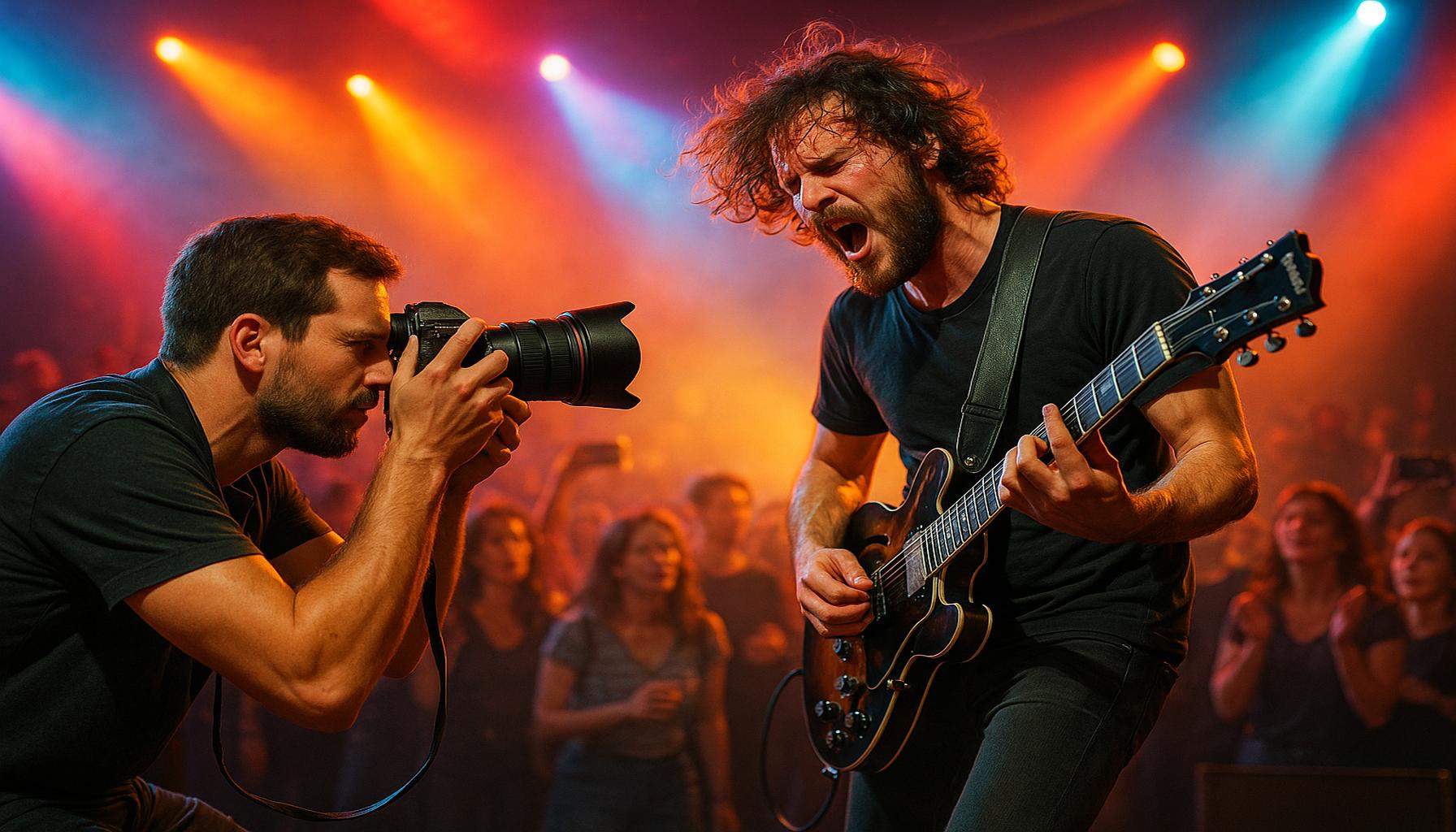
The Magical Blend of Live Music and Photography
The allure of live performances draws music enthusiasts into a world where sound, emotion, and energy collide in a breathtaking display. The unique aspect of live music is its ephemeral nature; while the experience can ignite a powerful connection, it is often over in a mere instant. This is where photography steps in, serving as a bridge that continues to connect fans to those fleeting moments long after the final chord has faded.
Several key elements illustrate the intertwined relationship between photography and music. Each of these aspects plays a crucial role in how a performance is remembered and cherished:
- Emotion: Pictures taken during a performance can encapsulate the raw whirlwind of feelings that engulf the artists and audience alike. A close-up shot of a lead singer’s expressive face, filled with passion and intensity, can evoke the same emotions as the song itself, allowing viewers to relive that moment vividly.
- Atmosphere: The surrounding elements—such as the venue’s ambiance, lighting effects, and crowd participation—contribute significantly to the concert’s vibe. A photograph that captures the contrasting colors of stage lights against a darkened background, paired with an audience waving their hands, conveys the electrifying atmosphere that defines live music experiences.
- Storytelling: Through a curated collection of images, photographers can create a narrative that chronicles the entire event—from the band’s warm-up to explosive encore. By sequencing photographs effectively, viewers can traverse through the highs and lows of the performance, much like attending the show itself.
Professional photographers often refine their craft with specialized techniques to enhance their documentation of live performances. They may rely on fast lenses, which enable them to effectively capture images in low-light conditions typical of many concert venues. Additionally, an acute awareness of lighting conditions allows photographers to adapt to shifting scenes, thereby ensuring that essential moments are not missed.
Moreover, the ability to anticipate key moments—such as a climactic guitar solo, or those intimate exchanges between band members— elevates the quality of their work. A photographer’s instinct can mean the difference between a missed opportunity and a breathtaking shot that seizes the essence of a powerful live moment.
As we continue to examine this fascinating relationship, we will uncover techniques and insights on how to capture the essence of a live performance. By harmonizing the visual art of photography with the auditory landscape of music, one can truly highlight the intrigue and beauty of transient moments that define the live performance experience.
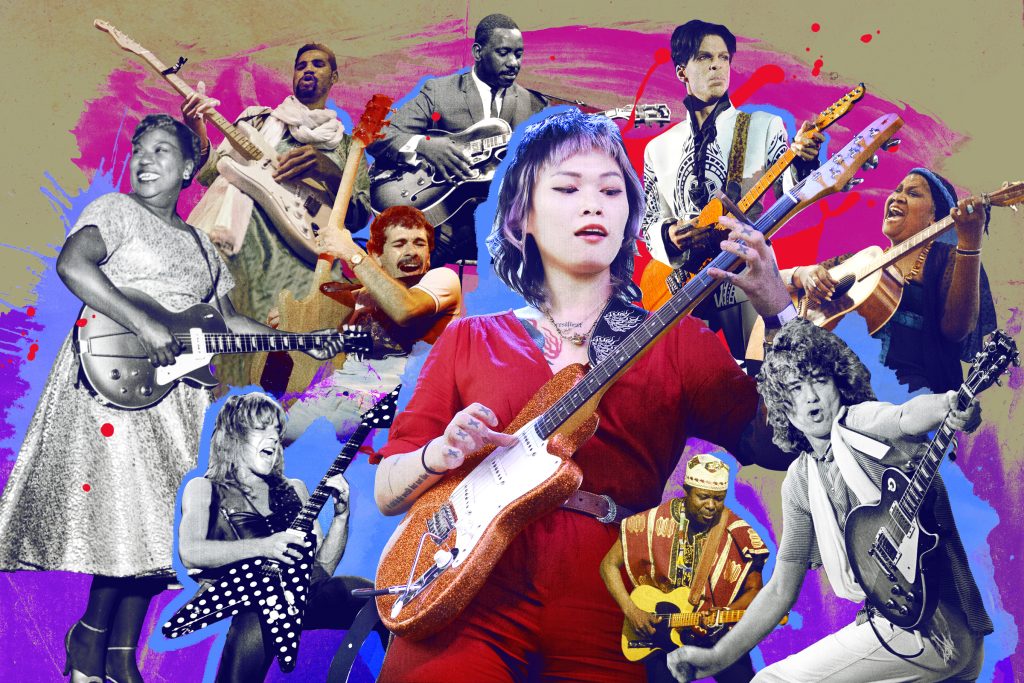
EXPLORE MORE: Click here to discover your creative side
The Craft of Capturing Live Music Moments
Understanding the relationship between photography and music requires a deep dive into the techniques that photographers employ to encapsulate the magic of a live performance. Every concert presents unique challenges, from unpredictable lighting conditions to the dynamic movements of performers. Professional concert photographers have mastered several key techniques that allow them to create stunning visuals that resonate with the audience.
One of the fundamental aspects of concert photography is the use of fast lenses. These specialized lenses have wide apertures which enable photographers to capture crisp, high-quality images even in dimly lit venues. In contrast to standard kits, fast lenses allow for quicker shutter speeds, minimizing motion blur while freezing jaw-dropping moments. This is particularly important when bands showcase electrifying on-stage antics, and a split second can make the difference between an average shot and a breathtaking photograph.
Moreover, a keen sense of lighting awareness is vital. Concerts are often marked by shifting lights, with colors transforming rapidly as they synchronize with the music. Photographers must be attentive to these changes and adjust their camera settings on the fly. A skilled photographer won’t hesitate to tweak the ISO, aperture, and shutter speed to catch the perfect moment when a soloist is drenched in dramatic red light or when a drummer becomes a silhouette against a burst of stage effects.
Another critical technique involves anticipating key moments. Successful concert photography often hinges on a photographer’s ability to predict when the most impactful actions will take place. Whether it’s a lead guitarist’s final strum or the shared laughter between performers, capturing these moments requires an intuitive understanding of the performance build-up. Photographers need to remain alert, focusing not only on the artists but also on interactions with the crowd, as these elements often contribute to the visual narrative of a performance.
- Composition: The arrangement of elements within the frame plays a significant role in how a photograph conveys emotion. Photographers often utilize techniques such as the rule of thirds, leading lines, and framing to draw attention to the main subject while offering a sense of context.
- Emotion Capture: Successful concert photographers strive to convey the emotions felt by both the audience and performers. Expressions of joy, nostalgia, and exuberance can be immortalized through careful framing and timing.
- Audience Interaction: Including the crowd in photographs can often enhance the storytelling aspect of the imagery. Shots that depict fans singing along, throwing their hands in the air, or reacting to pivotal moments can create a holistic view of the live experience.
With the right blend of technical skills and creative vision, photographers hold the ability to turn fleeting moments into lasting memories. Each click of the shutter captures not just an image but a feeling, a story, and an experience—making them vital storytellers in the realm of live music. As we continue exploring how to capture the essence of a live performance, it becomes evident that the interplay of music and photography is a celebration of transient beauty, preserved through the lens for audiences to appreciate long after the show has ended.
Photography and music, two art forms that evoke emotions and tell stories, have a profound relationship, particularly in the context of live performances. Capturing the essence of a live performance through photography requires understanding not just the visual aspects, but also the auditory experience that music brings. When photographing a concert, the interplay between light and sound can create a unique visual language. Different music genres often provide distinct lighting and stage aesthetics. For instance, a rock concert may feature dramatic lighting and vibrant colors, while an acoustic performance might evoke softer, more subtle tones. A skilled photographer can translate this atmosphere into stunning imagery that resonates with the viewer in a way similar to the music itself.Timing is crucial in live music photography. Photographers must anticipate key moments—be it the emotional crescendo of a song or the interaction between performers and the audience. The decisive moment, as coined by photographer Henri Cartier-Bresson, plays a pivotal role here. Capturing the raw emotions of artists and fans creates powerful images that reflect the live experience, allowing viewers to feel as though they were part of the event.Moreover, the equipment used can significantly influence the outcome. Shooting in low-light situations typical of concert environments often requires high-performance cameras and lenses that can handle such conditions well. The right settings, combined with the photographer’s unique perspective, can lead to breathtaking captures that reflect the energy of the performance.Additionally, the relationship between musicians and photographers can foster collaboration that enhances the overall experience. Musicians often rely on photographers to help communicate their artistic vision, while photographers are inspired by the music itself. This synergy can spark innovative ways of presenting the live music experience, encapsulating not just the event’s visuals, but the very essence of its sound.To further explore this intricate relationship, one might consider how photography can affect music marketing and consumption. High-quality images can become integral to an artist’s brand, influencing how fans perceive their work. Distinctive photography that captures the spirit of a performance can attract new audiences and create lasting connections between artists and their followers. By diving deeper into the collaboration between photography and music, artists can enhance their storytelling and forge stronger bonds with their audience. As live performances continue to evolve, so too will the methods by which we capture and celebrate them, highlighting the timeless interplay between sight and sound.
DISCOVER MORE: Click here to dive into street photography
The Art of Visual Storytelling in Concert Photography
Beyond technical skills, the heart of concert photography lies in visual storytelling. Each image has the potential to narrate a tale that connects the viewer to the event, the artists, and the audience. Photographers must cultivate the ability to translate the atmosphere and emotional palette of a live performance into captivating visuals. This entails not only focusing on the performers but also understanding the subtle dynamics of the environment surrounding them.
When attending a concert, the context of the venue plays a pivotal role in shaping the photographs. Smaller, more intimate locations often create an entirely different vibe compared to large stadiums. In smaller venues, a photographer might capture the raw, unfiltered energy of both the audience and musicians, creating a more personal connection. In contrast, festivals or grand arena shows provide opportunities to incorporate expansive visuals, showcasing the sheer scale of the performance and the audience’s reaction to it. The ability to reflect these different atmospheres in photographs requires adaptability and an acute awareness of one’s surroundings.
Color theory is another important aspect in capturing the essence of live performances. Different colors evoke various emotions and can impact how an image is perceived. For instance, warm colors like red and orange can evoke passion and excitement, while cooler tones like blue and green evoke calmness and introspection. Photographers utilize these principles to enhance their images, deliberately choosing when to highlight specific colors to resonate with the mood of the music being played. With the increasing prevalence of digital editing, photographers can also fine-tune these elements in post-production, bringing enhance drama or subtlety to their visuals.
The Role of Motion and Energy
Understanding motion and energy is critical in music photography. Musicians’ movements can be frenetic; a guitarist bending backward, a singer diving into the audience, or a drummer caught mid-swing can all create striking images full of vitality. Capturing these movements requires not only precision timing but also an appreciation of the rhythm and pace of the performance. Using techniques like panning or intentional motion blur can lead to dynamic images that convey the liveliness of the moment.
For instance, a photograph taken at a festival can depict the exhilarating atmosphere when the crowd erupts during a well-loved song, beautifully framing the music’s impact on the audience. This seamless intertwining of musicians and viewers transforms a mere photograph into a tribute to the shared experience that defines live music.
Utilizing Technology to Enhance Experience
As technology continues to advance, concert photographers now have access to sophisticated tools that enhance their ability to capture live performances effectively. The rise of mirrorless cameras has allowed for greater flexibility and compactness without sacrificing image quality. Additionally, the integration of real-time connectivity features enables photographers to share their images instantaneously with audiences through social media platforms, further broadening the reach and impact of their work.
Moreover, innovative post-processing software allows photographers to experiment with different effects, styles, and compositions, pushing the boundaries of how live music moments are visualized. Examples include framing techniques that can make the concert look more epic or artistic filters that can alter the vibe of an image to reflect the genre of music being performed.
This evolution of technology, paired with the timeless craft of photography, continues to shape the relationship between photography and music. As photographers explore new tools and techniques to express the essence of live performances, they play a crucial role in immortalizing fleeting moments, thus ensuring that the magic of live music lingers long after the last note is played.
DIVE DEEPER: Click here to discover the calming power of creativity
Capturing the Emotional Symphony: Conclusions on Photography and Music
The intricate relationship between photography and music serves as a powerful portal that transports audiences to the very heart of live performances. As explored throughout this article, the skillful combination of visual storytelling, venue context, color dynamics, and a keen understanding of motion brings the electric energy of concerts to life through images. Each photograph captures a moment steeped in emotion, allowing viewers to share in the unfiltered experience of a live show.
With the advent of advanced technology, photographers now enjoy tools that enhance their capabilities, capturing everything from the intimate gestures of an artist to the grand atmospheres of massive festivals. The interplay of light, color, and motion transforms raw images into evocative narratives, which resonate deeply with audiences and evoke a sense of nostalgia for moments that might otherwise be lost.
Ultimately, the essence of a live performance is best captured through the lens of a camera that understands not just the event, but the feelings and connections it fosters. As photographers continue to refine their craft and adapt to new technologies, they wield the power to immortalize these vibrant experiences, ensuring that the emotion of live music lingers on in the hearts of fans. In this way, the relationship between photography and music not only documents our cultural landscape but also celebrates the shared human experience that unites us all.
